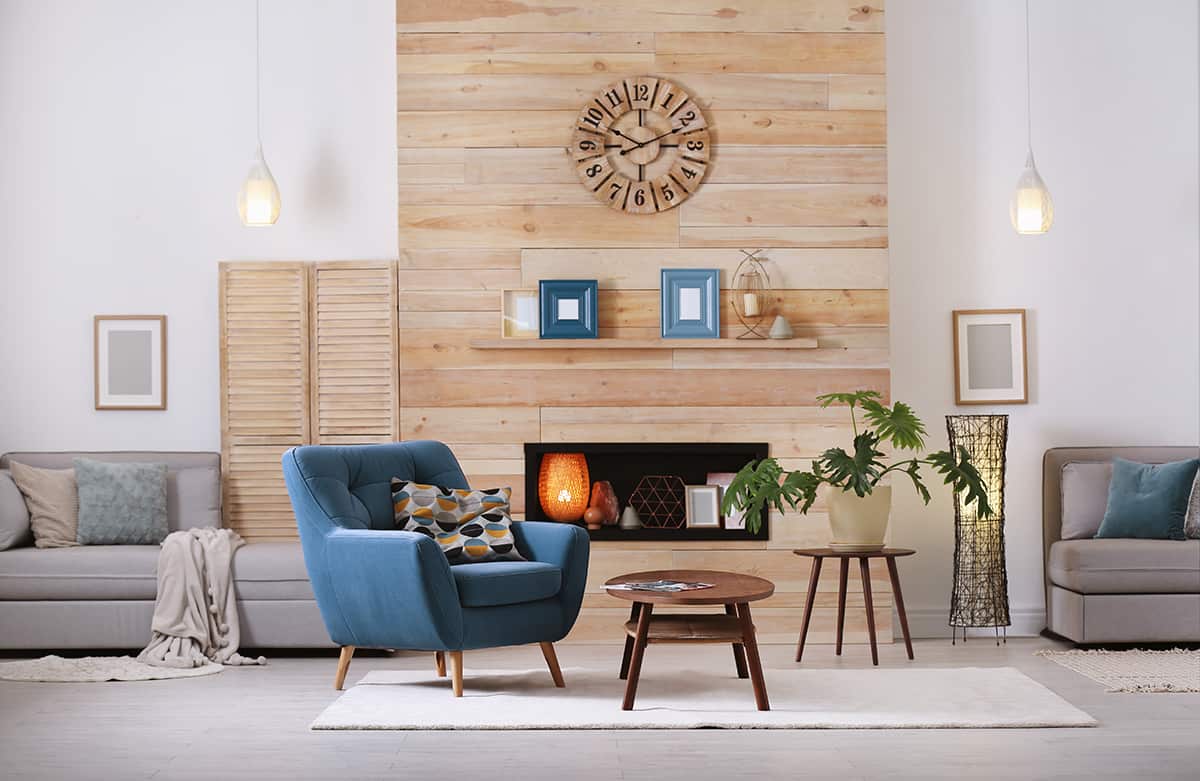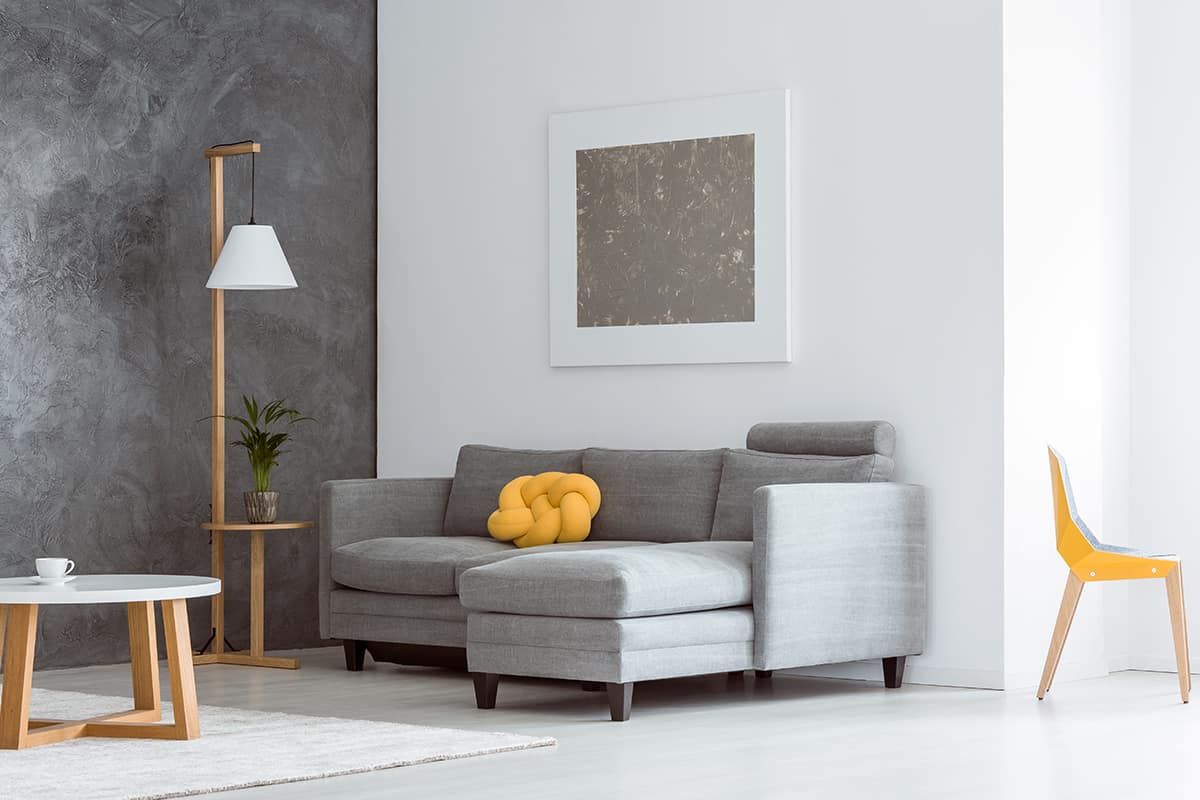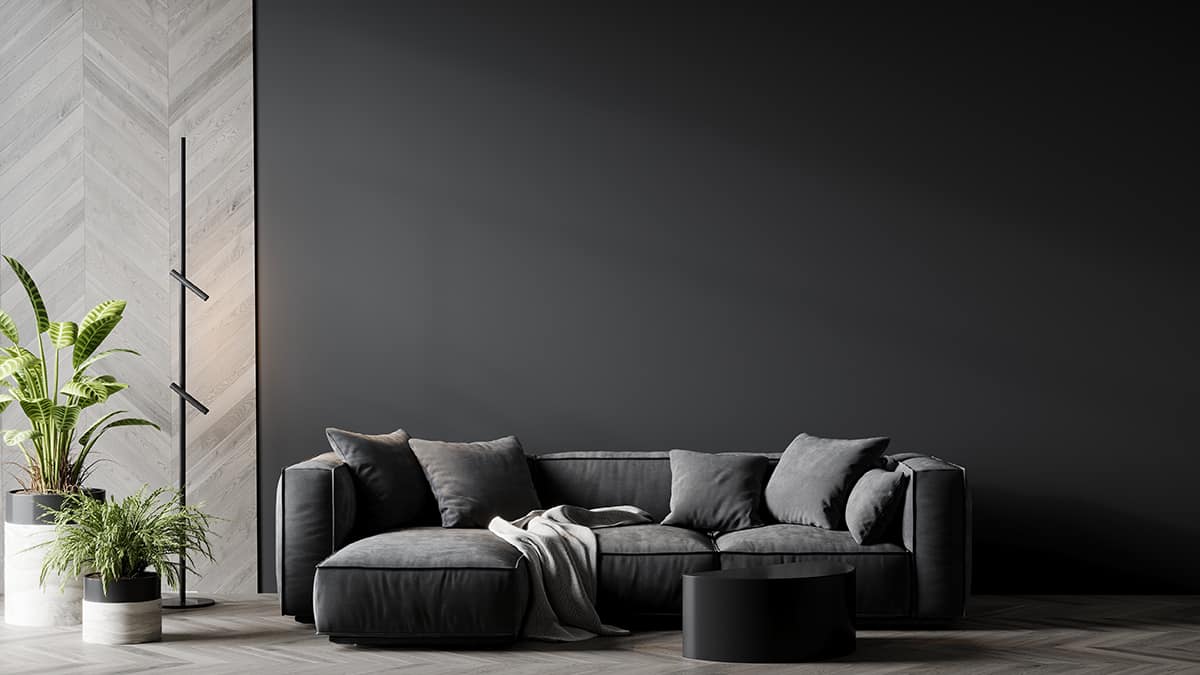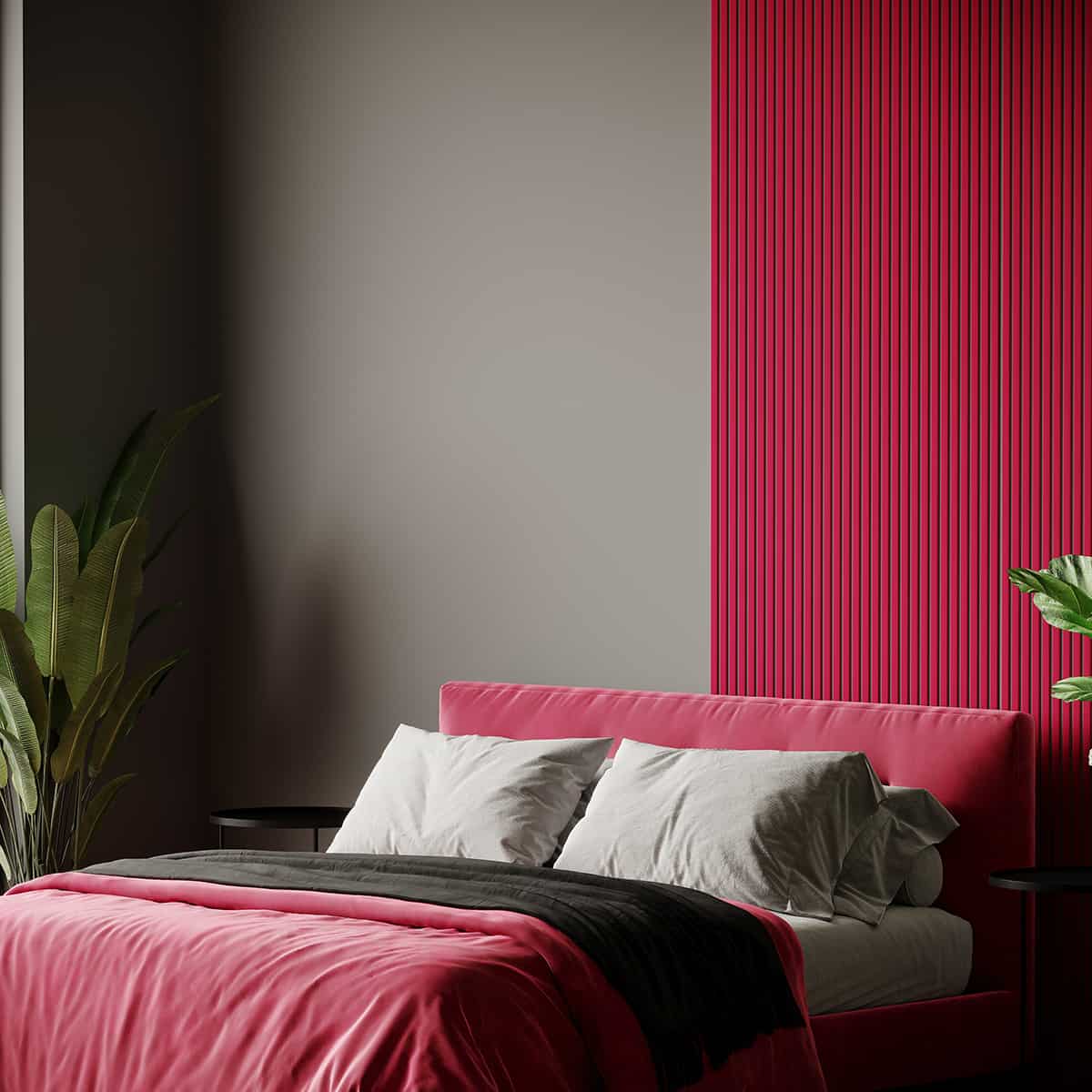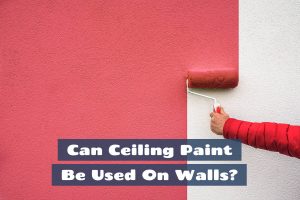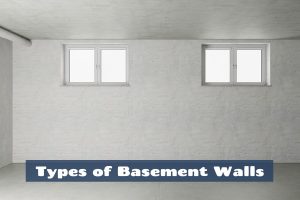An accent wall is a really great way to add interest, dimension, depth, or personality to a room. You can create an accent wall in a variety of ways, for example, by painting one wall in a contrasting color or applying a patterned wallpaper to it. There is no limit on how creative you can get when decorating an accent wall, incorporating different textures on the surface for a unique, customized look.
When choosing an accent wall, you need to consider the type of atmosphere you want to create, the best wall for acting as a focal point, and the type of finish you are going to use. Here, we explore the ways to choose an accent wall and how to achieve a style you will love for years to come.
Benefits of an Accent Wall
Create focal point
One reason that many people choose to create an accent wall is that it operates as a focal point within a room. This makes it an especially good choice in rooms that lack a natural focal point, such as a fireplace.
By making one wall a different color, pattern, or texture from all of the other walls, the eye will be instantly drawn to it, and you’ll find yourself facing toward that wall more so than the others.
You can use an accent wall to create a focal point on any wall of a room that you want to draw attention to, even if that wall isn’t the obvious focal point. Make the wall behind the sofa the focal point of a living room if you are especially fond of your sofa, even though the natural and more obvious focal point would be the wall facing the sofa.
Hide flaws
If one of your walls is displaying some damage, such as minor cracks, or holes from old screws, you can cover this up by creating an accent wall.
Painting a flawed wall in a deep and dark paint, such as navy blue or black, will help to minimize the visibility of flaws, though it won’t entirely hide them. You could instead use wallpaper to hide small cracks on a wall or clad a wall in wooden planks to completely obscure any flaws from view.
Add personality
An accent wall is a really fun way to add personality to a space and let your style shine without making a room feel overwhelming or over the top. For example, if you have fallen in love with a leopard print wallpaper, using it across every wall in a room could be seen as too dramatic and busy, so instead, you could just use it on one wall to create an accent wall.
Similarly, if you want to paint your room in a dark color, like forest green, but you’re worried about the space reading as too dark and depressing, then instead use the paint on one wall so that you can enjoy the color while still maintaining an overall bright and light space.
Choosing the Right Accent Wall
If you’ve decided that you want to create an accent wall in your room, the first step is deciding which wall is going to get special treatment. Knowing which wall is going to work as the accent wall will help you to figure out what type of color or interior style is going to work best because you can factor in the way the light hits the wall and the furniture or accessories that you will be placed in front of the wall.
In many cases, a room will have a natural or obvious wall that should be designated as the accent wall. In a living room, the accent wall is usually the same wall that has a fireplace on it, or the same wall where a TV is fixed onto the wall. In a bedroom, there are often two natural options for an accent wall; the wall behind the headboard of a bed and the wall that the bed looks out onto.
In this case, you can choose your accent wall based on which side of the room you want to be the focal point. If you have an elaborate, stylish bedframe, using the wall behind the headboard will make a feature out of the bed. However, if you have floating shelves displaying your favorite objects on the opposite wall, you might prefer to make that the accent wall to draw attention to them.
In rooms that do not have a fireplace or an obvious accent wall, the best choice of wall is often the one that faces the doorway of the room. This is because it is the wall that most people will first see upon entering the room, therefore making it a good choice as the dominant wall. There are other factors that can affect which wall will work well as an accent wall.
For example, if you have a piece of artwork you want to display, which will become the main feature in a room, you can draw attention to it by hanging it on an accent wall. To do this, choose which wall you want to hang the artwork on, and then choose a color for that wall that’s really going to make the artwork pop.
This could be done by using a color that contrasts against the main colors in the art, or it could be done by painting the wall pure white or black so that the art really stands out.
Choosing an Accent Color and Style
An accent wall should be exactly that; an accent to the other walls in the room. It can be hard to settle on an accent color, though, because there are so many different ways that colors, textures, and patterns can accent each other.
Consider your color palette.
If you aren’t changing the colors on the other walls in a room, then the accent color needs to work with your existing color palette. By simply painting one wall, you can transform the whole feel of a room with little time or money spent on the project. If your remaining walls are a neutral color, then you have the luxury of a wide range of colors to choose from for your accent wall.
If the walls are not neutral, you should choose a color that complements them. A contrasting color can work well for a vibrant look, for example, if your existing walls are olive green, paint the accent wall in burnt orange.
Alternatively, for a more subdued accent, choose a darker shade of the same color for your existing walls. For example, if your walls are pale blue, paint an accent wall in navy blue to create some depth and intensity.
Consider your desired atmosphere.
The atmosphere you want to achieve will affect the type of accent wall you choose. For an intimate vibe, go for a darker, sultry color, or for a playful feel, opt for a quirkier, more unusual color.
If your room is going to be used as a family space, such as a kitchen or living room, you might want to lean toward a warmer color for the accent wall to make it feel cozy and inviting. Alternatively, cooler colors will work best if you want a room to feel fresh, soothing, or relaxing.
Consider your natural lighting
The natural light your room receives, and more specifically, the light your accent wall is going to receive, can affect the type of color you choose. This is because paint colors can read differently in various types of light, affecting the overall feel of a room. If your accent wall is going to be facing a south-facing window, then it’s going to get plenty of natural light throughout the day.
This means any paint you use on that wall will appear brighter and warmer than it does on the paint swatch. If your accent wall is on the darker side of a room, then any paint color you apply to it will read as darker and cooler. For some colors, like greige, the natural light isn’t going to have a huge effect.
However, for other colors, such as red or purple, the light can completely transform how the paint appears. Deep red in bright light might appear as cherry red, while in low light, it could look burgundy or almost brown. Because of this, always use tester pots of paint on your accent wall and view them at different times of the day to see how the light affects them.
Consider your furniture and accessories.
If you aren’t planning on buying new furniture and accessories, then you’ll want to make sure your accent wall works well with the items you already have.
If you plan to position a pink chair in front of an accent wall, then using pink paint on that wall isn’t going to be your best option because the chair will fade into the background and make for a flat look. Instead, contrast the pink chair with a green wall to make it stand out or a neutral wall for a more subtle style.
